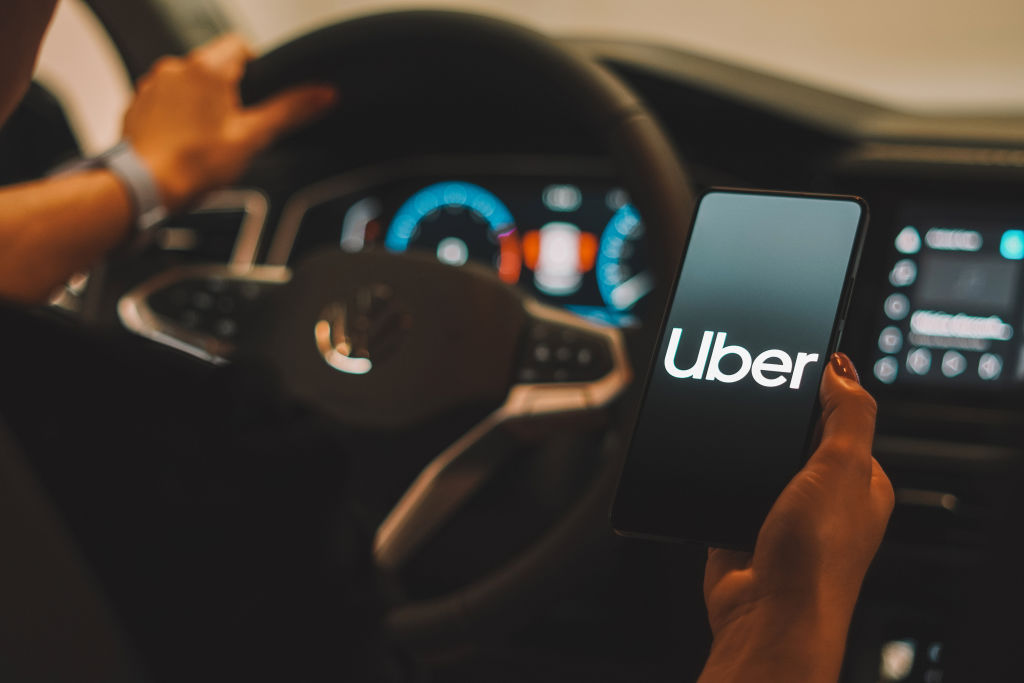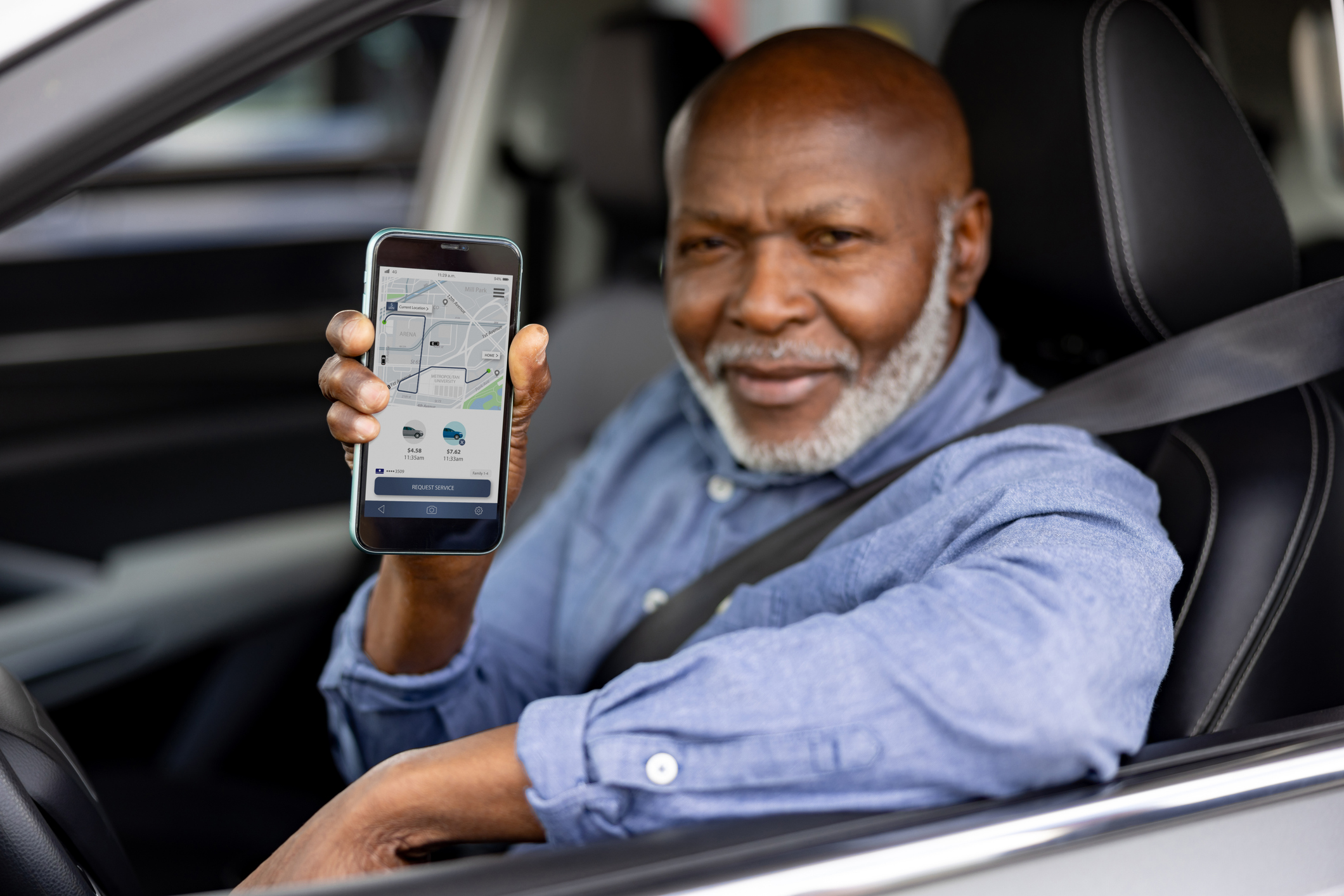Are Rideshare Drivers on the Road to Financial Ruin?
Being a rideshare driver can be a great way to meet people and make money. But overlooking this one thing could cost you thousands.


Driving for a rideshare company sounds great on the surface. You set your hours, meet people from all walks of life and earn money in the process.
If you're a college student or a retiree wanting to get out of the house more, you might consider it as a viable option. While it can be for many, there are some things you should consider before taking the plunge.
For starters, you'll need to use your vehicle for rides and deliveries. Over time, the wear and tear from the miles can reduce your earnings further with oil changes, ample trips to the gas station, tire and brake replacements and other repairs eating into your bottom line.
From just $107.88 $24.99 for Kiplinger Personal Finance
Become a smarter, better informed investor. Subscribe from just $107.88 $24.99, plus get up to 4 Special Issues

Sign up for Kiplinger’s Free Newsletters
Profit and prosper with the best of expert advice on investing, taxes, retirement, personal finance and more - straight to your e-mail.
Profit and prosper with the best of expert advice - straight to your e-mail.
However, there's an even more critical element that relates to your car insurance.
The startling truth about insurance and ridesharing
Being a rideshare driver means you're driving more miles, putting you at risk for more accidents.
A University of Illinois at Chicago study found that one in three rideshare drivers had been involved in an accident. Depending on when the accident happens, it can make a huge difference in your financial protection.
Say you're starting work for the day and driving around awaiting your first rider. As you move around the neighborhood, a car pulls out suddenly in front of you, and even with quick reflexes, you're unable to stop in time, slamming into the vehicle.
The other driver has injuries and significant damage. Your vehicle has seen better days. Then you're surprised to find you're on the hook for damages to your car because your regular policy doesn't cover ridesharing.
Why? Because your regular policy is for personal use only, not commercial, which is what you would be using it for if you drove for Uber or Lyft.
While both provide limited liability coverage during this time, it's for other drivers. If your vehicle becomes damaged or you incur any injuries resulting from an accident, you could be on the hook for these costs if you haven't notified your insurance that you intend to use your covered vehicle for ridesharing purposes.
That means you could be without a car if you can't afford repairs, and if you're hurt, you could incur significant medical debt.
Thankfully, you can add rideshare coverage to your existing auto insurance policy. The best way to save money on insurance is to shop around. Use the tool below to explore some of today's best car insurance offer, powered by Bankrate:
How much does ridesharing insurance cost?
Insurify has a tool that lets you compare rideshare insurance costs in your area. They pool quotes from top providers, such as Allstate and Progressive, to help you see how much you'll pay. Keep in mind your costs vary based on where you live, what you drive and your driving history.
It’s important to note that this extra coverage is only needed during the period when you’re logged into a rideshare app but haven’t yet accepted a trip.
Once you accept a ride request, companies such as Uber and Lyft provide more comprehensive coverage that extends to you, your vehicle and other motorists if an accident occurs.
What does ridesharing insurance cover?
Adding rideshare insurance is integral to protecting your finances. Here are some of the coverages it includes:
- Liability coverage: Covers damage and injuries that another party incurs resulting from an accident.
- Comprehensive and collision coverage: Covers you financially if your vehicle incurs damage from an accident, weather or theft.
- Uninsured/underinsured motorist protection: If a driver hits you and doesn't have insurance or their coverage is inadequate, this bridges the gap to ensure you receive the financial assistance you need.
- Deductible reimbursement: It's an optional policy that covers the difference between the ridesharing's deductible (often around $2,500) and your policy's deductible to lower your out-of-pocket costs. What is a deductible in car insurance? It's the amount you must pay before your carrier pays its share of the claim.
- Additional coverage: You can also add on coverage for roadside assistance, rental car reimbursement and more.
A driver's checklist before doing ridesharing

Before signing up, read the qualifications of the provider to ensure you qualify. This is particularly the case for college students, as Uber requires a year of driving experience before being approved.
Once you qualify, reach out to your insurance carrier. Many of the top carriers allow you to change coverage in their app, or you can call to request ridesharing coverage. Ask them what their policy covers and any additional coverages you might want to consider.
Ultimately, while it's an extra step, securing coverage for ridesharing is integral. It bridges the gap between the lapses in coverage for when you're awaiting work and when you're working.
This will protect you financially from having to pay significantly out-of-pocket to repair or replace your vehicle and any other bills that arise.
Related content
Profit and prosper with the best of Kiplinger's advice on investing, taxes, retirement, personal finance and much more. Delivered daily. Enter your email in the box and click Sign Me Up.

Sean is a veteran personal finance writer, with over 10 years of experience. He's written finance guides on insurance, savings, travel and more for CNET, Bankrate and GOBankingRates.
-
 December Fed Meeting: Live Updates and Commentary
December Fed Meeting: Live Updates and CommentaryThe December Fed meeting is one of the last key economic events of 2025, with Wall Street closely watching what Chair Powell & Co. will do about interest rates.
-
 This Is Why Investors Shouldn't Romanticize Bitcoin
This Is Why Investors Shouldn't Romanticize BitcoinInvestors should treat bitcoin as the high-risk asset it is. A look at the data indicates a small portfolio allocation for most investors would be the safest.
-
 I'm a Federal Benefits Pro: I Answer These 2 Questions a Lot
I'm a Federal Benefits Pro: I Answer These 2 Questions a LotMany federal employees ask about rolling a TSP into an IRA and parsing options for survivor benefits, both especially critical topics.
-
 Smart Money Moves Savers Should Make in 2026
Smart Money Moves Savers Should Make in 2026These steps will get you on the road to achieving your 2026 savings goals.
-
 How Much Would a $50,000 HELOC Cost Per Month?
How Much Would a $50,000 HELOC Cost Per Month?Thinking about tapping your home’s equity? Here’s what a $50,000 HELOC might cost you each month based on current rates.
-
 My First $1 Million: Self-Employed Trader, 50, San Francisco
My First $1 Million: Self-Employed Trader, 50, San FranciscoEver wonder how someone who's made a million dollars or more did it? Kiplinger's My First $1 Million series uncovers the answers.
-
 Waiting for Retirement to Give to Charity? Here Are 3 Reasons to Do It Now, From a Financial Planner
Waiting for Retirement to Give to Charity? Here Are 3 Reasons to Do It Now, From a Financial PlannerYou could wait until retirement, but making charitable giving part of your financial plan now could be far more beneficial for you and the causes you support.
-
 Are You Ghosting Your Finances? What to Do About Your Money Stress
Are You Ghosting Your Finances? What to Do About Your Money StressAvoidance can make things worse. You can change your habits by starting small, talking with a family member or friend and being consistent and persistent.
-
 Your End of Year Insurance Coverage Review Checklist
Your End of Year Insurance Coverage Review ChecklistStop paying for insurance you don't need and close coverage gaps you didn't know about with this year-end insurance review.
-
 4 Smart Ways Retirees Can Give More to Charity, From a Financial Adviser
4 Smart Ways Retirees Can Give More to Charity, From a Financial AdviserFor retirees, tax efficiency and charitable giving should go hand in hand. After all, why not maximize your gifts and minimize the amount that goes to the IRS?
-
 I'm an Insurance Pro: If You Do One Boring Task Before the End of the Year, Make It This One (It Could Save You Thousands)
I'm an Insurance Pro: If You Do One Boring Task Before the End of the Year, Make It This One (It Could Save You Thousands)Who wants to check insurance policies when there's fun to be had? Still, making sure everything is up to date (coverage and deductibles) can save you a ton.